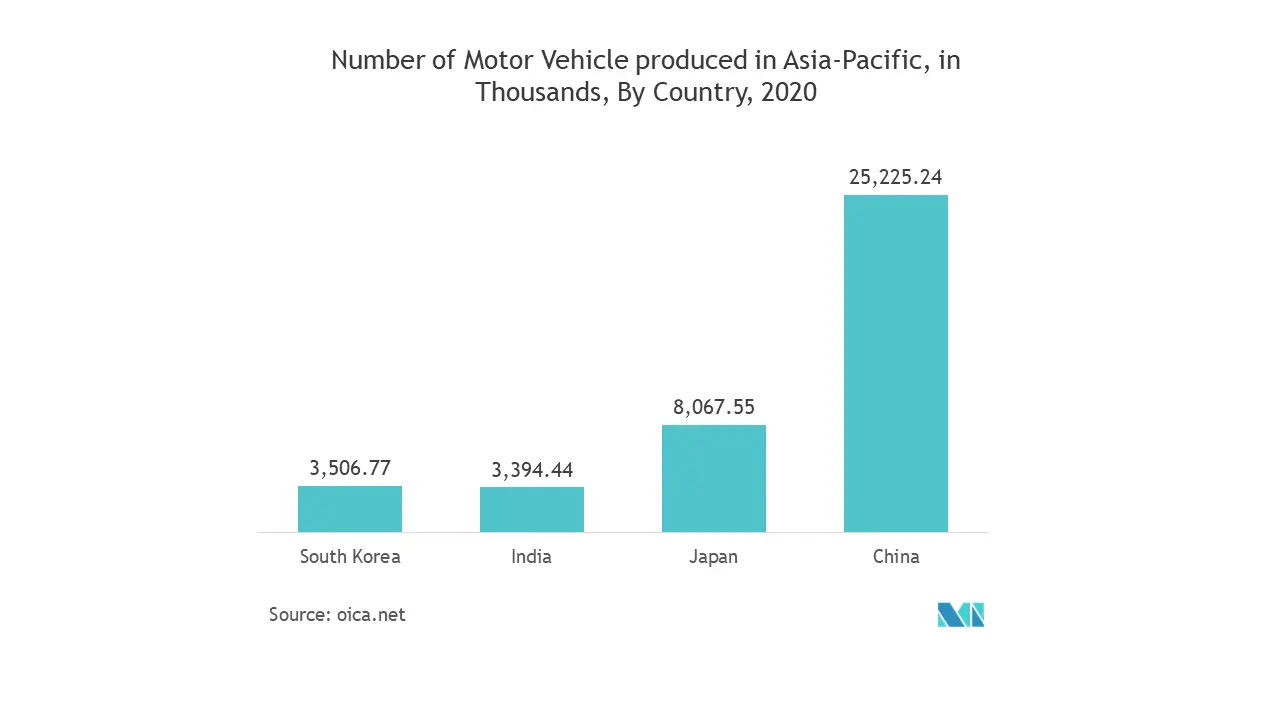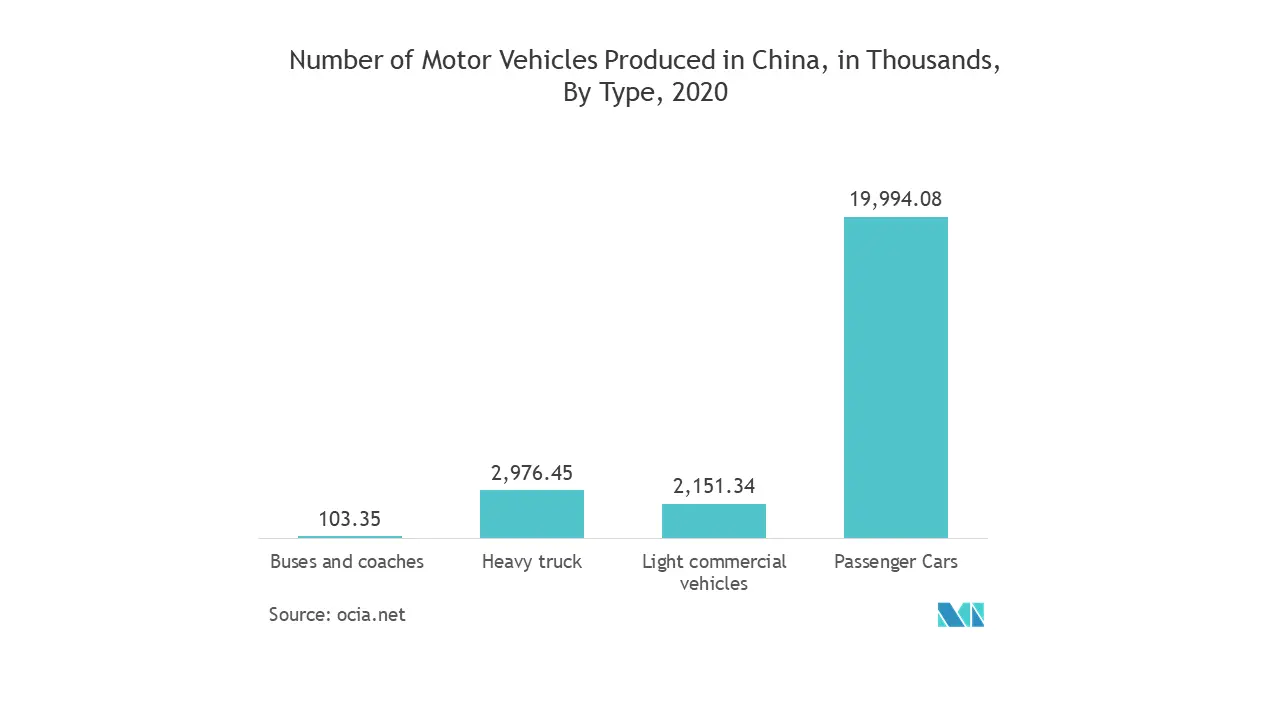Market Trends of Asia Pacific Factory Automation and Industrial Controls Industry
This section covers the major market trends shaping the APAC Factory Automation & Industrial Controls Market according to our research experts:
Automotive Industry to Drive the Market Growth
- The automotive industry is one of the prominent sectors that hold a significant share in automated manufacturing facilities. It is observed that the production facilities of various automakers are automated to maintain accuracy and efficiency. Further, the growing trend of replacing conventional vehicles with EVs is expected to further augment the automotive industry's demand.
- Automation, in the region, is currently no stranger to automotive shop floors. In fact, Machine Vision has found a way in the automotive making by carrying out imaging-based automatic inspection and analysis for automatic inspection and process control. Whereas automation software and control systems have been supporting everything from component supply to the delivery of new vehicles.
- In November 2020, Hyundai Motors announced a partnership with the Indonesian government to build its first manufacturing plant in the country. Hyundai Robotics launched as a new company on May 1st, 2020, mentioned that the order is for 370 industrial robotic arms for the new facility. Located near Jakarta, Indonesia's capital city, Hyundai Motors' first manufacturing plant in Southeast Asia is anticipated to be built by 2022. The plant is being constructed in an area of 776,000 sq m, with a manufacturing capacity of up to 250,000 cars.
- In October 2020, DENSO, a Japan based automotive supplier developed its own cloud-native Factory-IoT platform, to connect all its factories around the world via cloud, this has strengthened DENSO’s global production system, by enabling factories to respond immediately to production changes based on local demand, and allow production teams to conduct real-time analysis of the movement of workers and operation statuses of different facilities.
- The Smart Advanced Manufacturing and Rapid Transformation Hub (SAMARTH) Udyog Bharat 4.0 initiative aims at enhancing awareness about Industry 4.0 within the Indian manufacturing industry and help stakeholders address challenges related to smart manufacturing.

China to Hold Significant Market Share
- China has led the industrial robot market, which has driven its way to factory automation in the region and is one of the leading manufacturing countries in the Asia-Pacific region and globally. The increase in shipment of industrial robots in the country and the adoption of various Industrial Control System software across the country facilitates factory automation at scale.
- Manufacturing is one of the pillars of China's economy and is undergoing a rapid transformation. As the population ages, along with rising labor costs, the legacy model based on inexpensive migrant workers is no longer sustainable. Moreover, 70% of the world’s computers, communication equipment, and consumer electronics are made in China.
- The country’s aging population necessitates automation. According to China’s National Bureau of Statistics, the country’s working-age population, people aged between 15 and 64 years, is 998 million. The decline in this population started in 2014, and is expected to drop as low as 800 million by 2050.
- The industrial control system in the country has emerged across various fields, like the energy, transportation, water, and municipal sectors. Due to the deep integration of information technology and industry and the rapid development of the Internet of Things, the networked control system is becoming the development trend of industrial automation in China.
- The number of companies deploying factory and process automation technologies and robotics in the country is less when compared to the enormous size of China’s manufacturing base and the number of workers it employs. This trend presents a great opportunity for companies in the industrial automation sector in China.


